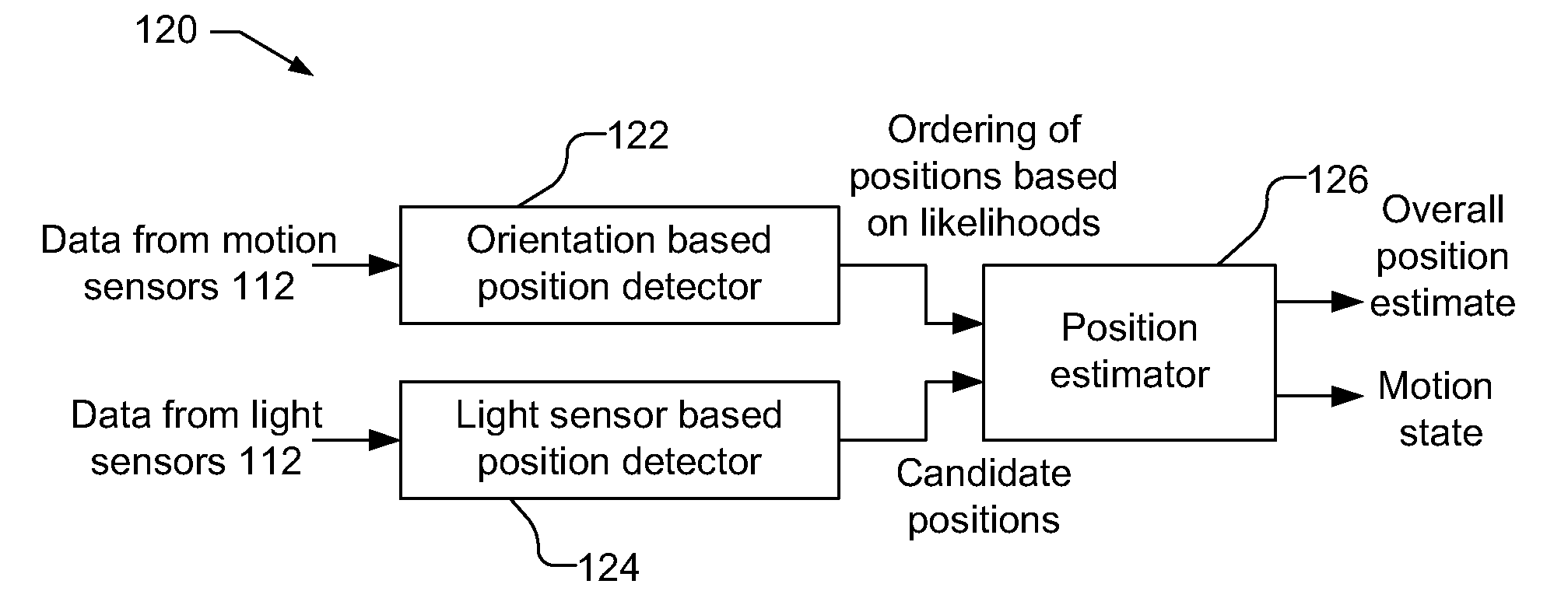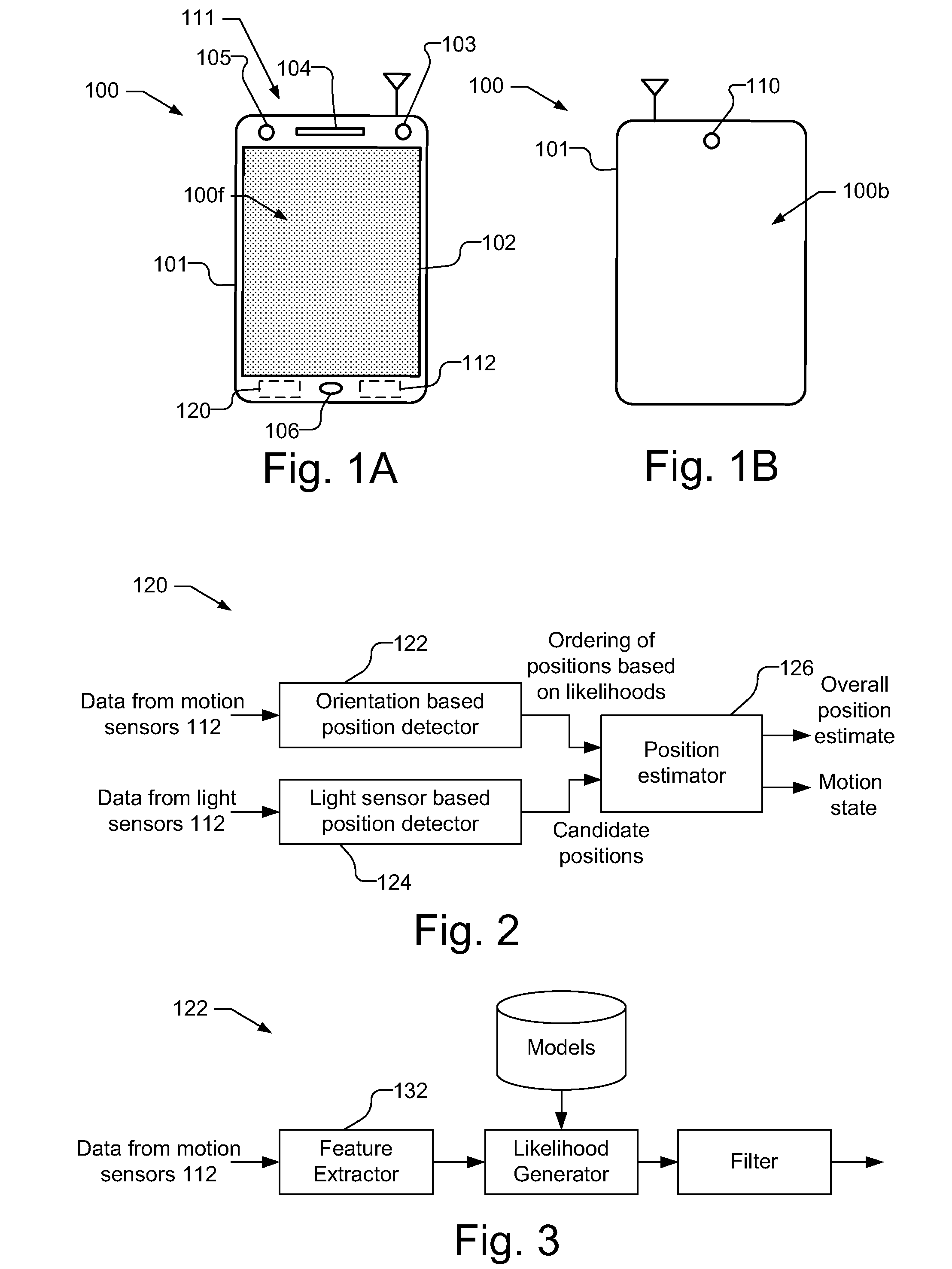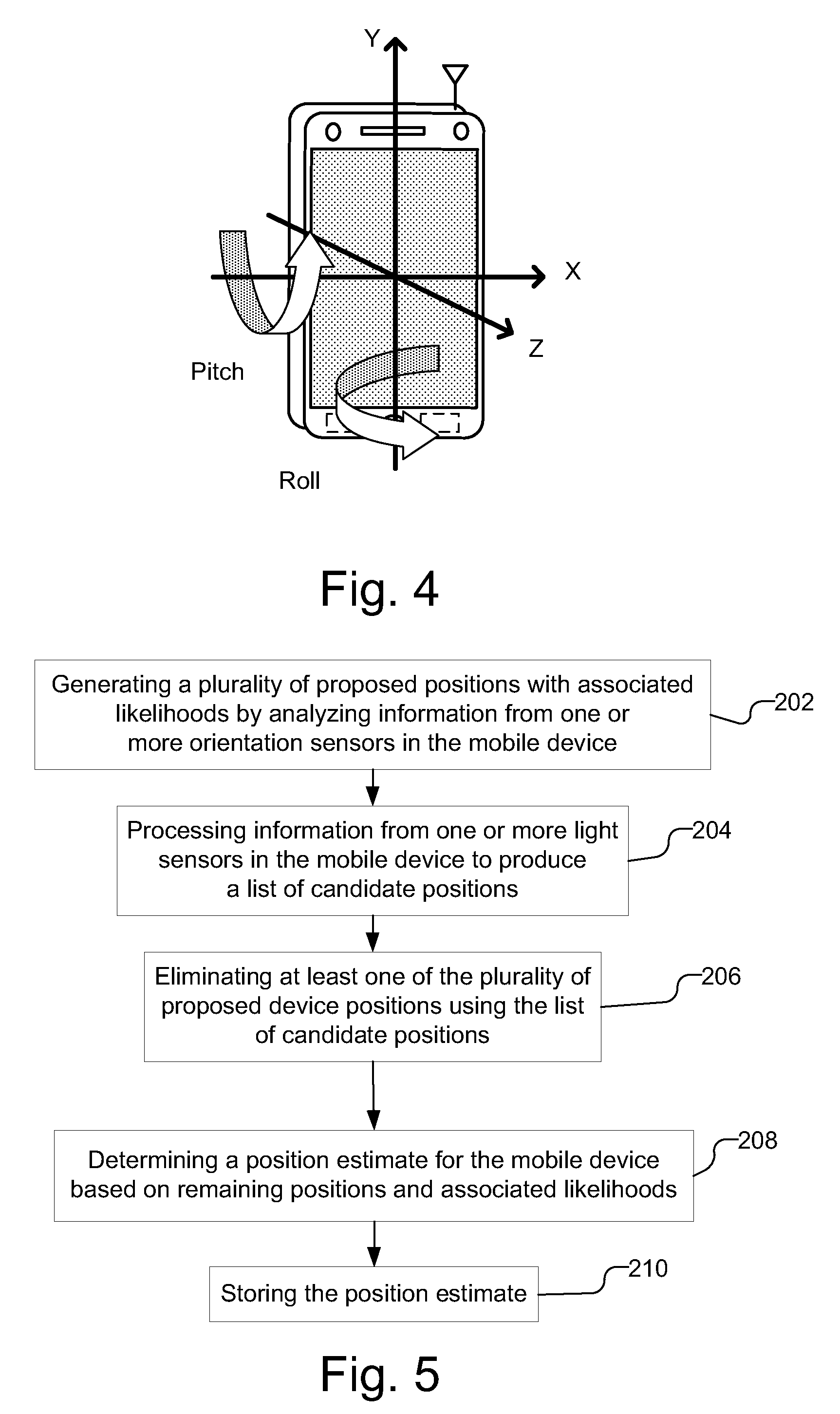Device position estimates from motion and ambient light classifiers
- Summary
- Abstract
- Description
- Claims
- Application Information
AI Technical Summary
Benefits of technology
Problems solved by technology
Method used
Image
Examples
Embodiment Construction
[0019]FIGS. 1A and 1B illustrate a front face 100f and back face 100b, respectively, of a mobile device 100, capable of using information from motion sensors and light sensors to derive a position estimate. Mobile device 100 is illustrated as including a housing 101, a display 102, which may be a touch screen display, as well as a speaker 104 and microphone 106. The mobile device 100 includes an ambient light sensor (ALS) 103, which reports the intensity of the light (e.g., in lux) impinging on the front face of the device. The mobile device 100 may further include a proximity sensor 105, which reports the intensity of emitted infra-red light reflecting off objects that are near the front of the device. The mobile device 100 further includes a camera 110 to image the environment and which may be used as a back-side light intensity sensor. In one implementation, the ALS 103 may be a camera, or alternatively, a separate front facing camera on the front face 100f of the mobile device 1...
PUM
 Login to View More
Login to View More Abstract
Description
Claims
Application Information
 Login to View More
Login to View More - R&D
- Intellectual Property
- Life Sciences
- Materials
- Tech Scout
- Unparalleled Data Quality
- Higher Quality Content
- 60% Fewer Hallucinations
Browse by: Latest US Patents, China's latest patents, Technical Efficacy Thesaurus, Application Domain, Technology Topic, Popular Technical Reports.
© 2025 PatSnap. All rights reserved.Legal|Privacy policy|Modern Slavery Act Transparency Statement|Sitemap|About US| Contact US: help@patsnap.com



